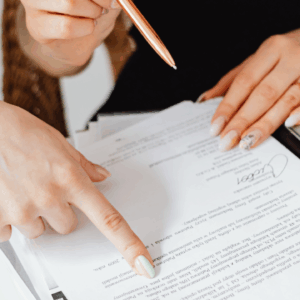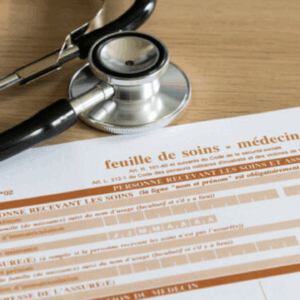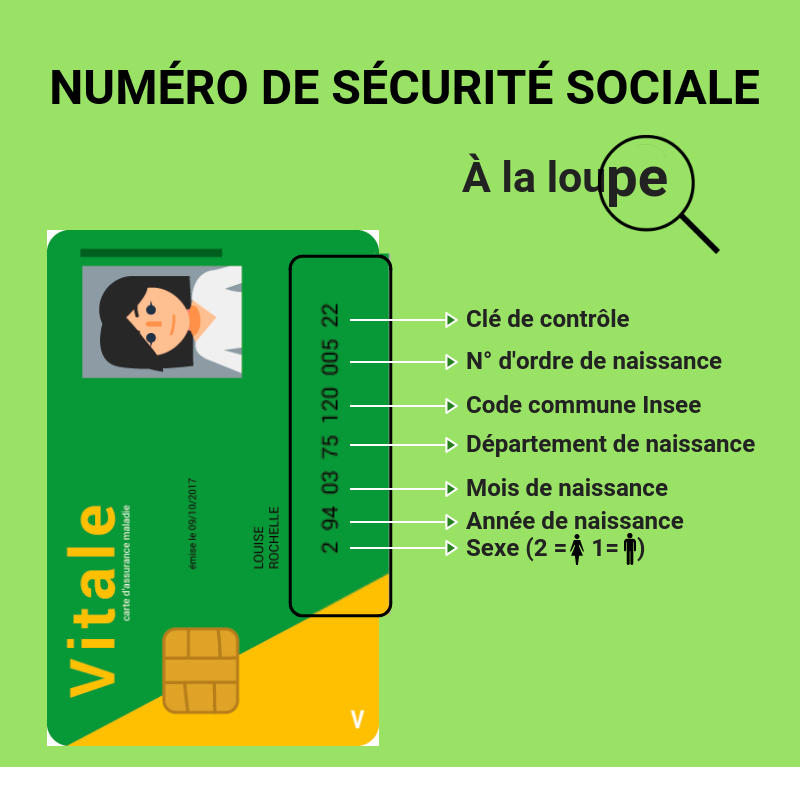How to Apply for French Sécurité Sociale as a Foreigner

This post is the first part in my series to navigating the French healthcare system as an expat. Check back often—I’m adding new guides regularly to make French healthcare a little less confusing!
A Quick Intro: Sécurité Sociale
One thing that everyone knows about France is their universal healthcare system, also known as sécurité sociale. A national health insurance that covers up to 70% of medical expenses and the rest is typically covered by your mutuelle, which is a top-up insurance either offered through your job or you can purchase privately.
In simple terms, sécurité sociale is how France makes healthcare affordable for everyone. If you’re legally living in France, even as a foreigner, you can usually join this system and receive a Carte Vitale—the green card that connects you to public health coverage and makes medical appointments much easier (and cheaper!).
The French Sécurité Sociale is divided into five main branches, each covering a different aspect of social protection. Together, they make up the backbone of France’s welfare system, not just healthcare, but many other parts of life too. Let’s break down those 5 branches into bite-sized chuncks.
L’Assurance Maladie (Health Insurance)
This is the branch most people think of when they hear “sécurité sociale.” It helps pay for your healthcare costs and is managed by CPAM (Caisse Primaire d’Assurance Maladie). It can cover any of the following circumstances:
- Doctor visits
- Hospital care
- Prescription medications
- Medical tests
- Maternity care
- Some mental health support.
- Partial reimbursements for dental, vision, and hearing (with extra coverage often from a mutuelle).
L’Assurance Vieillesse (Old-Age Insurance)
This branch takes care of your future income, it tracks your working life and contributions so you can receive a pension when you retire. It also supports family members after the loss of a loved one. It can cover any of the following circumstances:
- Retirement pensions
- Survivor pensions (for widows/widowers)
- Disability pensions
L’Assurance Accidents du Travail / Maladies Professionnelles (Work Accidents & Occupational Illness Insurance)
This branch protects workers if they’re hurt on the job or become ill because of their work. It provides 100% medical coverage and income replacement if needed. It covers the following situations:
- Workplace accidents
- Job-related illnesses
- Medical care and compensation for lost income
- Disability benefits for serious cases
La Branche Famille (Family Benefits)
Managed by CAF (Caisse d’Allocations Familiales), this branch helps support families financially, especially after the arrival of a child or during difficult times. This branch covers the following situations:
- Birth and adoption benefits
- Monthly child allowances (allocations familiales)
- Parental leave payments
- Housing assistance (like APL)
- Support for single parents or low-income families
- Childcare subsidies
La Branche Recouvrement (Collection Branch)
This branch is run by URSSAF, the agency that collects all the contributions (cotisations sociales) that keep the entire sécurité sociale system working. This covers the following areas:
- Collects social security contributions from employers and the self-employed
- Ensures the other four branches are funded
- Helps fight undeclared work
As of 2021, there’s a newer sixth branch focused on helping the elderly and the disabled maintain autonomy at home or in care, Autonomy (La Branche Autonomie). It’s still developing but is becoming a more prominent role in the system.
Now that we know what sécurité sociale covers, we’ll go through who’s eligible, what documents you need, how to apply, and what to expect, especially as a foreigner in France, so you can feel confident navigating French healthcare from day one.
Table of Contents
Start here: la protection universelle maladie
So now that we have an understanding of sécurité sociale, we need to back it up for a second. In order to have sécurité sociale, we need to understand PUMA, protection universelle maladie. This is what is known as universal health protection, this is the system that governs access to public health coverage in France and is a key component of the healthcare branch of sécurité sociale.
PUMA was introduced in 2016 to help simplify and expand healthcare access across France. It guarantees any person who lives in France on a stable and regular basis (regardless of employment status) has the right to healthcare coverage through the French state. PUMA is how you access health coverage through sécurité sociale. By applying for sécurité sociale you are essentially asking to be covered under PUMA.
Who then qualifies for PUMA? You must be living in France legally, meaning you have a visa, residency permit, or another type of legal residency status. You must have lived in France for 3 months continually. You are not covered by another health insurance or private employer insurance from abroad.
For the most part, PUMA does not cost anything, however, there are some individuals without a professional acitvity (i.e. early retirees or non-working spouses) who may be subject to a social contribution called cotisation subsidiaire maladie (CSM). This depends on your annual income from capital and whether or not you are actively working. This contribution only applies if your income is above a certain threshold and you are not otherwise contributing to the system already.
Who can apply and when you're eligible
In general, anyone legally residing in France on a long-term basis and not already covered by another system (like an employer’s foreign insurance) can apply for sécurité sociale. The key factors for application are residency duration, visa type, and proof of stability in France. The following table lists the different types of visas and their eligibility and time line to apply.
Sécurité Sociale Eligibility by Visa Type
| Visa/Status Type | Eligiblity | Notes |
|---|---|---|
| VLS-TS (Student) | ✅ Yes | Apply via student pathway; student-specific coverage often begins upon enrollment. Registration via etudiant-etranger.ameli.fr. |
| VLS-TS (Employee/Salaried) | ✅ Yes | Employer typically registers you; you can also apply independently as soon as you start working. |
| VLS-TS (Visitor) | ✅ Yes | Must prove stable residence; apply under PUMA if not employed, can apply after 3 months continuous legal residence in France. |
| VLS-TS (Spouse of French citizen) | ✅ Yes | Eligible upon visa validation. |
| Talent Passport (e.g. entrepreneur, artist) | ✅ Yes | Covered under employment/self-employment pathways, eligible through URSSAF. |
| Carte de séjour temporaire/pluriannuelle | ✅ Yes | For students, workers, family members, etc. |
| Carte de résident (10-year resident card) | ✅ Yes | Full access to health coverage. |
| EU/EEA/Swiss citizens | ✅ Yes | Can after 3 months of continuous residence (unless employed, then immediately). |
| Refugee/Subsidiary protection status | ✅ Yes | Eligible for full coverage upon recognition. |
| Asylum seekers | ⚠️ Limited (via AME) | Covered under AME or specific asylum provisions. |
| Au pair visa | ⚠️ Possibly (case by case) | Depends on agreement and prefecture; host family may assist |
| Short-stay visa (visa court séjour) | ❌ No | For stays under 90 days—no eligibility. |
| Tourist/visa-free stays (e.g. U.S. 90-day rule) | ❌ No | Not eligible for sécurité sociale coverage. |
Where and How to apply
Most foreigners will apply through their local CPAM (Caisse Primaire d’Assurance Maladie), which manages health insurance enrollment for residents in France. This is the branch of the French sécurité sociale that handles your Carte Vitale, reimbursements, and general healthcare coverage. You can send your application and supporting documents via the post or you can drop it off in person.
If you are sending your application by the post, it is highly recommended that you send it LRAR (lettre recommendée avec accusé de réception).
You will need to download the CERFA form 15763*02 from either the Ameli site or the Service Public site. The second page of the application will tell you what documents you will need to provide depending on your situation. You can assume that your dossier basics will be requested.
If along the way you have any questions at all call 3646 (free from French numbers) for CPAM assistance in French. Some CPAM offices may offer English-language help, but it varies.
What Documents You'll Need
The following is a general list of documents needed, please check the second page of the application to find your specific situation for the required documents necessary.
- Completed application form (as previously mentioned) with your full name, address, date of arrival in France, marital status, dependents, etc…
- Proof of identity: this can be a valid passport which includes your VLS-TS and/or titre de séjour (residence permit). If you do not have a titre de séjour yet, you will need to include proof of validation of your visa (which you did within the first 3 months of arriving to France).
- Birth certificate: you will need the long-form version that shows your parents’ names as well as a certified translation (from a traducteur assermenté, sworn translator) if your certificate is not in French. Check out Bilingual Minds for this.
- Proof of Address in France: you will need to prove that you’ve been living in France for at least 3 months (if your situation requires this). You can provide any one of the following for this:
- Utility bill (electricity, gas, internet) in your full name.
- Quittance de loyer (rent receipt)
- Rental contract or lease.
- Attestation d’hébergement (if someone is housing you) + a copy of their ID and utility bill in their name.
- Attestation d’assurace habitation (home insurance).
- Proof of residency in France for 3 months: At least 3 months’ worth of dated documents confirming your residence in France (e.g., utility bills, banking statements, or housing contracts)
- Proof of Activity (depending on your status):
- If employed (salarié): employment contract (CDD or CDI), first payslips.
- If self-employed (auto-entrepreneur): SIRET number of certificate of business registration (KBIS), declaration of activity with URSSAF, invoices or proof of income.
- If a student: Proof od enrollment (certificat de scolarité), valid student visa, student housing or CROUS docs.
- If a spouse or dependent: marriage certificate, proof of spouse’s legal residence & activity, proof of relationship if applying as a dependent (birth certificates for children).
- If unemployed/not working: bank statements showing sufficient financial resources, proof of private health insurance (until sécurité sociale is granted).
- Bank information: you will need to send a copy of your RIB so this can be added to your account and you can receive reimbursements directly to your bank account.
How to Submit Your Application
Once you have your application filled out, your documents gathered and translated, you are ready to send your dossier in. Depending on where you live will depend on where you send your dossier if you are mailing it in.
If you do not know where to send your application to, you can have a look here for the closest CPAM office. YOu can also find more information on the main page for the CPAM de Paris from the Service Public.
If you are in Paris, you’ll mail your dossier to the following address:
Assurance Maladie de Paris
75948 PARIS CEDEX 19
What Happens Next (and how long it takes)
Once you’ve submitted your application either in person or by mail, here’s what to expect will happen next.
You will receive a temporary social security number, which starts with an 8. I never got an official document telling me my temporary number, but instead, I received a letter reminding me that I needed to choose a médecin traitant (general practitioner) and have them declared to Assurance Maladie.
Once you have your temporary number, you can start to make medical appointments if necessary as well as picking up any prescriptions as needed. You will need to inform your health care provider or the pharmacist before hand that you will be using your temporary number as you have made the request to open your account. Since you cannot request your carte vitale yet, you will need to manually submit your receipts along with a feuille de soins to your local CPAM office.
The average wait time from when the application is submitted to when you receive your permanent number is around 4 to 6 months. Expect 2 to 3 months from submission to receiving your temporary number and another 2 to 3 months to get your permanent number. If you have any doubts or questions about anything, do not hesitate to call 3646 for help.
What to do While You Wait
There is not a whole lot you can do except sit tight and wait. If it’s getting to the 3 month mark and nothing is moving, give CPAM a call. Some office have English-speaking assistance, but do not count on it. If you are not comfortable speaking in French on the phone, please ask a friend if you can to make the call for you.
You can go to medical appointments but be prepared to pay out of pocket for these appointments. Always ask for a feuille de soins after each visit so you can submit it manually. You will also need o save any and all of your receipts. Before you send off any of your papers, create a digital (or paper) copy. Keep everything together and organized. This will help if ever there are any issues.
Applying for your Carte Vitale
When you have your official sécurité sociale number and you have created your account online, you can request your carte vitale.
A little bit about your sécurité sociale number. It is a 13 digit number and 2 digit control key. The first number is your gender. 1 for male, 2 for female. The next 2 digits are the year of your birth. The next 2 digits are your month of birth. The following 5 digits are your place of birth, if you are foreign born, the first 2 will be 99 followed by 3 digits of the INSEE code, finally birth order number. The last 2 digits are your key code.
You can log into your account and from the top menu choose Mes Démarches. You’ll then click on Commande de Carte Vitale. From here you will need to follow the instructions. Be sure to have a passport-style ID photo ready as well as a copy of your ID. When you’ve filled out all the required information, you will submit your request and then wait for your card to be delivered, usually in about 2-4 weeks.
Tips, Mistakes to Avoid, and Personal Advice
When sending your dossier by mail, do not forget to send it by lettre récommendé avec accusée de reception. This is a tracking method that requires the receiver to sign for it and you will get a copy of the signature with a time and date stamp of when it was received. This is always a good thing to do when sending anything to a government administrative office.
Make a copy of everything, physical and digital if necessary. This will help in organization later if you need to go back and find something. You can see more tips on keep papers organized on my article about your dossier.
You can use the system early, even if you don’t have a Carte Vitale. All you need to do is ask for a feuille de soins for any medical appointment or prescription. You can submit these manually to CPAM for retroactive reimbursement when your number is finally active.
As soon as you do have an official number, request your attestation de droits so you can prove your covered while waiting for your Carte and you can use it to apply for a mutuelle.
Sign up for your online account when you have your number. You should receive a temporary code by mail, but if that does not happen (like it did for me), you can call 3646 and they will send you via SMS a code and link to sign up.
As is anything when it comes to living in France, knowing some of the language (if you already don’t) will help immensely. It’s a good idea to learn a few key phrases for this situation. Here are some you can use:
- Est-ce que mon dossier était bien reçu? Has my file been received?
- Quels documents sont manquants? What documents are missing?
- Je voudrais savoir où en est mon dossier. I would like to know the status of my file?
- Je n’ai pas encore reçu de réponse, est-ce normal? I haven’t received a response yet, is this normal?
- Je vous envoie les pièces justificatives demandées. I am sending you the requested supporting documents.
- J’aimerais obtenir une attestation de droits. I’d like to request a certificate of coverage.
- Je n’ai pas encore reçu ma Carte Vitale. I haven’t received my Carte Vitale yet.
- Comment puis-je demander une Carte Vitale? How can I request a Carte Vitale?
- Je souhaite créer mon compte Ameli. I’d like to create my Ameli account.
- Je n’ai pas encore de Carte Vitale, pouvez-vous me donner une feuille de soins? I have not received my Carte Vitale yet, can you give me a treatment form?
- Je suis en attente de mon numéro définitif. I am waiting for my permanent number.
- Est-ce que vous avez besoin de mon attestation de droits? Do you need my certificate of coverage?
- Je joins une attestation d’hébergement et une preuve de résidence. I am including a housing certificate and proof of residence.
- Voici la copie de mon acte de naissance et sa traduction. Here’s a copy of my birth certificate and its translation.
My timeline:
- May 14, 2020 – sent application with documents to Assurance Maladie via la poste.
- June 16, 2020 – received letter indicating my temporary social security number as well as reminding me to declare a médecin traitant.
- July 22, 2020 – received a letter letting me know I can now apply for my carte vitale, as well as a separate letter informing me of my new official number.
- July 20, 2020 – called 3646 to get the code to log into my online Ameli account. Ordered my carte vitale.
- August 7, 2020 – received my carte vitale in the mail.
Useful Vocabulary for Sécurité Sociale
| French Term / Phrase | English Meaning / Explanation |
|---|---|
| Sécurité sociale | France’s public health insurance system that reimburses medical costs |
| Numéro de sécurité sociale | Social security number used to track healthcare and benefits |
| Carte Vitale | Health insurance card used for medical appointments and reimbursements |
| Remboursement | Reimbursement of medical expenses by Social Security |
| Ticket modérateur | Portion of medical costs not covered by Social Security |
| Affiliation | Enrollment or registration in the Social Security system |
| CPAM (Caisse Primaire d’Assurance Maladie) | Local office that manages health insurance claims and reimbursements |
| Assuré(e) | Person covered by Social Security |
| Ayant droit | Dependent covered under someone else’s Social Security (e.g., child) |
| Médecin traitant / médecin référent | Primary care doctor who coordinates care for optimal reimbursement |
| Parcours de soins coordonné | Coordinated care pathway required for maximum reimbursement |
| PUMA (Protection Universelle Maladie) | Universal health coverage for residents in France |
| Hospitalisation | Hospital stays and related medical care |
| Soins courants / soins de ville | Routine or outpatient care (doctor visits, lab tests, etc.) |
| Maternité | Pregnancy and maternity-related care |
| Invalidité / handicap | Disability-related coverage |
| Maladie professionnelle / accident du travail | Coverage for work-related illness or injury |
| Feuille de soins | Paper claim form submitted if the doctor does not use Carte Vitale |
| Télétransmission | Electronic transfer of medical claims to Social Security for reimbursement |
| Taux de remboursement | Percentage of medical costs covered by Social Security |
| Mutuelle / complémentaire santé | Supplementary insurance to cover costs not reimbursed by Social Security |
| CSS (Complémentaire santé solidaire) | State-supported health coverage for low-income residents |
| Aide / subvention | Assistance or subsidy available to help with healthcare costs |
| Je souhaite m’inscrire à la Sécurité Sociale. | I’d like to register for Social Security |
| Quel est le taux de remboursement ? | What percentage of costs will be reimbursed? |
| Quels documents sont nécessaires ? | What documents are required? |
| Puis-je utiliser ma Carte Vitale immédiatement ? | Can I use my Carte Vitale immediately? |


You May Also Like

Understanding the Loi Madelin : A Guide for Self-Employed Professionals
26 November 2025
How to calculate your due date in France and expectations
16 May 2025

3 Comments
Pingback:
Pingback:
Pingback: